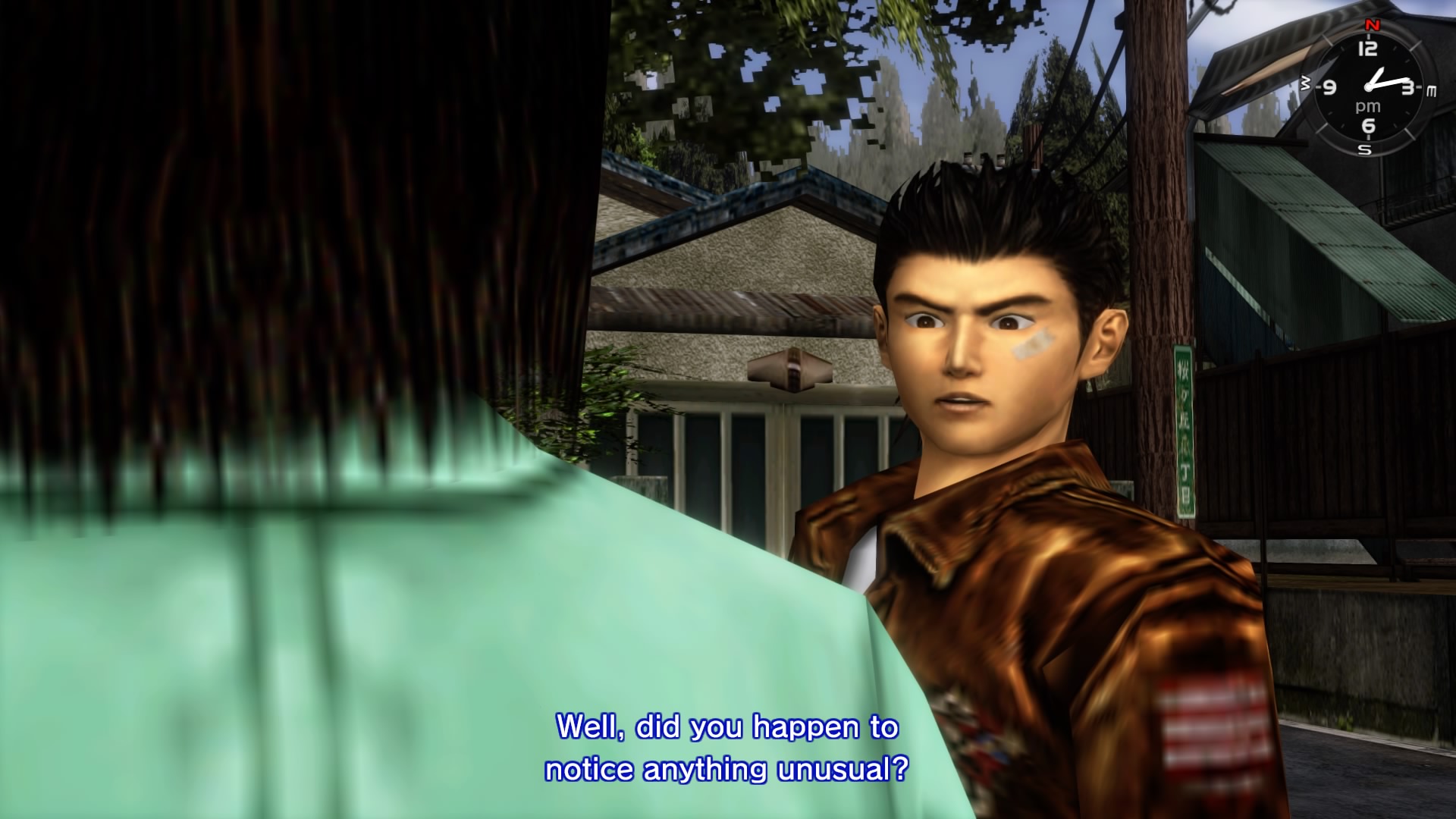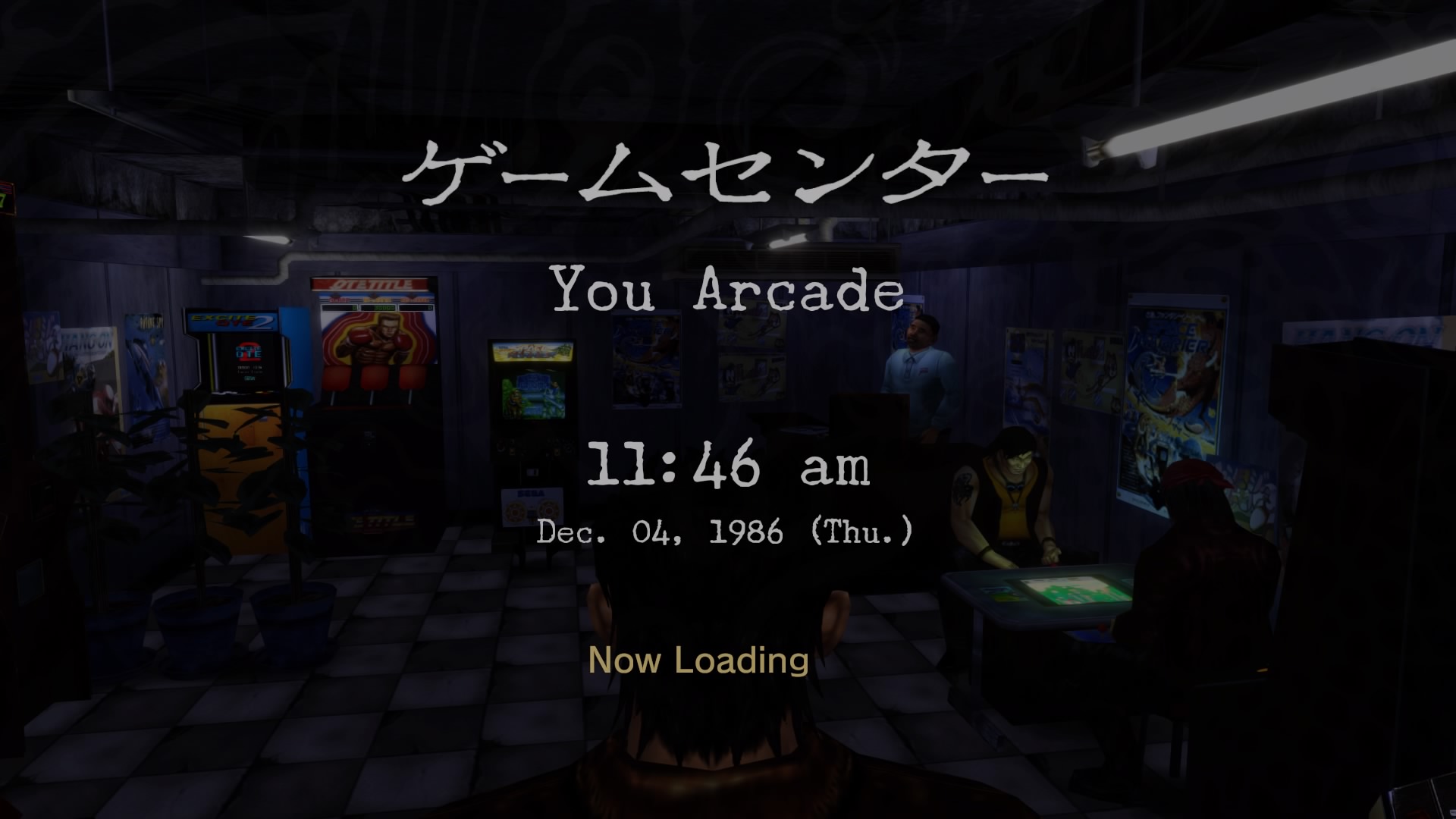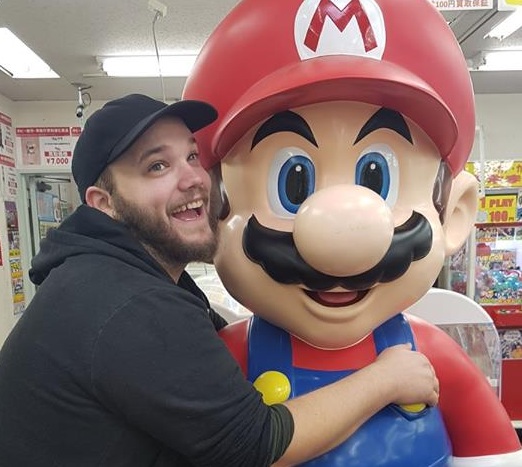
The impact that the Shenmue series has had on the industry at large is undeniable, and, in the context of its year of release, playing the first game would have been like receiving the future in disc form. Its graphics, open world setting, NPCs set to a 24hr schedule, and side activities would have created something never seen before that would go on to inspire several genres with its ideas. These games are true cornerstones of gaming history, and should always be remembered as such. Time, however, has a way of catching up with us all, and to say that these games have aged poorly would be an understatement. Don’t let the emphatic ravings of the fan base fool you: without that nostalgic history to draw on, newcomers to this series are going to be bored senseless.

But it has gatcha machines, which meant that, just as in real life, I blew literally all the money I had on me at the time on little plastic figures.
In this release, Shenmue I and II are presented pretty much how they were on the Dreamcast, even down to leaving the VMU icon in the save slots. This is the closest that you’ll get to the “real” experience without actually dragging out SEGA’s ill-fated console. This was the best way these games could have been released at this point, allowing players to see exactly what they were at the time. The reason this is important is that these are not good games by today’s standards, not by a long shot. They have aged so poorly, but they also set the example that many other games would go on to emulate, pioneering ideas that simply hadn’t been done before. That is how Shenmue I & II should be remembered, and this release serves that idea well; any “HD updates” would have only further highlighted the flaws in these games.
Shenmue’s story is a strange mix of half Kung-Fu movie, half Japan/Hong-Kong life simulator. The first game begins with your father being murdered by a criminal/martial arts master named Lan Di, who definitely isn’t an adult Yusuke Urameshi (despite his appearance.) Having been handed your ass in the same fight, you naturally strike out on a quest for revenge. The stories of the first two games don’t really feel like enclosed stories that work together to make up a larger narrative. It would be more appropriate to refer to each game as a “chapter” of a larger story that’s just taken 20 years to resume. In fact, creator Yu Suzuki has said before that he’d like for the story to span four or five games, so I guess don’t hope for a conclusion with Shenmue III, either.

I can’t explain why Ryo looks permanently shocked at people’s breasts, though. That, apparently, has always been a thing.
There actually isn’t a whole lot to the narrative present in the first game, and the second game only improves on this so much. There just isn’t a lot that happens, and the game compensates by padding out the in-game days with waiting. The story’s pacing is slow, often only having a single story-relevant development occur each day, and those days are long. This was much worse in the first game, with players unable to skip or speed up time at all, being forced to wait out the clock after exhausting a handful of side activities. It was made marginally better in the second game with the occasional option to skip time for some story events, but overall remained a problem. The dialogue is also incredibly repetitive, with every towns-person memorising the same responses in a hilarious, albeit creepy manner. Side-character development is also slim to nil, so once you’re bored of Space Harrier and arm wrestling, you’re stuck with waiting out the clock. Both games become a chore to play very quickly, with any enjoyment or tension that the game’s story might hold being sucked out by how slow and forced everything is.
For most of both games, you’re thrown into an early industry attempt at a 3D open world, and back then it must have seemed glorious. As mentioned, you can talk to everyone, and they’ll actually speak with voiced dialogue back at you. You can enter quite a few of the buildings around the place, some of which have mini-games and activities for you to take part in. A big emphasis on some, as there’s also a whole lot of empty space in there. Again, however, in the context of games around 1999, that in and of itself would have been amazing. The world runs according to a 24-hour clock, with NPCs set to a schedule, including those that are mission-pertinent. At the time of release, this would have looked and felt like a living, breathing world, more than any other game at the time might have.

Hell, depending on the day, me being at the arcade before lunch is still pretty accurate.
Ryo handles with the most uncooperative tank controls I’ve ever controlled, moving around on-screen like a brick in a washing machine. All the control schemes are janky as hell, in fact, with perhaps the weird exception of the fork-lift mini-game. The fighting, for what little there is in a game that’s about tracking down a murderous martial artist, is passable. Again, I feel like this is one of those things where it would have been great once upon a time since this was developed off the back of Virtua Fighter. These days it feels clunky, with delayed animations between a hit connecting and it registering on the struck model, making timing difficult. Let’s not even get into the hitboxes. The fight itself doesn’t feel satisfying, and it’s weird that defeated enemies just convulse on the ground until the fight is over. Its importance to the end game is also severely understated, and you’ll almost certainly not have prepared for it. The second game only came out a couple of years later using the same engine, and mostly the same design, so none of this really changes much between titles.
There’s also the little fact that Shenmue, while likely not creating them, coined the term and popularised “quick time events.” I personally have a lot of beef with QTEs in game design, always have, and Shenmue literally swayed others to put QTEs in their own games. It might be twenty years late but: That’s bad, Shenmue, very bad! A lot of the random events or sudden occurrences will employ them, with no consequence other than the scene restarting and having to go through it again. You can’t even watch what’s happening for how demanding they are. The fighting might not have been the greatest, but having more of it in place of the QTEs would have been preferable.

“Hey, does this look like athlete’s foot to you?”
Shenmue, whose graphics could probably pass for a kitschy indie game these days, released during a time when most in-game character models looked like Kryten from Red Dwarf. This goes for both games, as the second was released only a couple of years after the first, so there’s no real “improvement” between them. The sound is incredibly bit-crushed and would be unsalvageable in its current state for an “updated” release without extensive re-recordings. That said, all NPCs can speak to you (even if their dialogue is repetitive), and every scene is voiced. While I can’t personally confirm that this is the case, one has to assume that the load times are also faster just for running on better hardware.

Fans of the Shenmue series place the games on a pedestal reserved for the gaming greats, heralding it as one of the greatest things to ever happen in the industry. In a sense, this isn’t incorrect; for all its faults, Shenmue blazed a trail that many amazing games would go on to follow. Its ideas at the time weren’t just novel but borderline revolutionary, and its reputation in that sense is well deserved. That said, the games have aged incredibly poorly, and by modern standards, they are downright terrible to play for a multitude of reasons. A slow and dull story, clunky controls, more forced waiting than an MMORPG, and any other number of design elements that haven’t aged well. Effectively, they’re an essential part of gaming history, but they aren’t fun to play. For new players coming into the Shenmue series on nothing but recommendations alone, temper your expectations with the understanding that “cornerstone” in this industry does not automatically mean “classic.”











